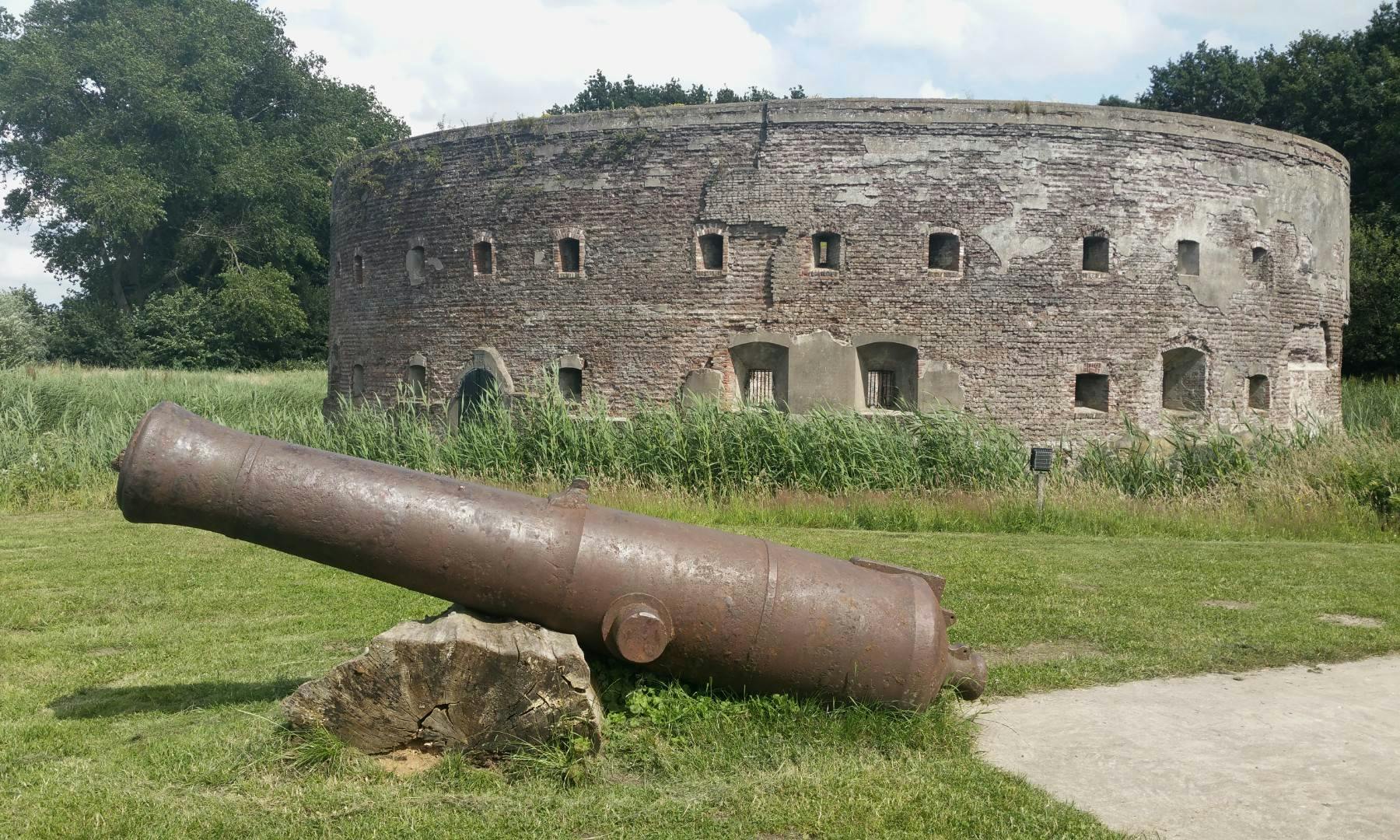The Defence Line of Amsterdam
Around Amsterdam is a ring of 46 forts, which, combined with dikes and locks, forms the Defence Line of Amsterdam. This UNESCO World Heritage site is one of the largest defence lines ever built in the Netherlands, and tells fascinating stories of the country’s military past.
Defending the capital
The Defence Line of Amsterdam is a 135-kilometre ring of fortifications around Amsterdam. Built between 1880 and 1914, it was an addition to the Dutch Water Line. This was an ingenious system to flood the surrounding land to a depth of between 30 and 50 centimetres, making it too deep to march through and too shallow to navigate by boat. The capital city would thus be well protected against invasion.
Meeting modern demands
The idea for the Defence Line arose in the 19th century, when tensions in Europe were running high. There was war between Prussia, Denmark and Austria, and between Germany and France. In view of all the wars, and the increasing power of modern weaponry, the Dutch decided that the country’s defences needed an update.
The Fortification Act of 1874 ordered the construction of a new line of forts around Amsterdam: the Defence Line of Amsterdam. The first to be built was the Fort Abcoude, but because it hadn’t been designed to withstand the latest artillery, it proved to be obsolete no sooner than it was completed. The construction of the subsequent fortresses was thus delayed so the design could be modernised. The interval lasted ten years. The final plan was completed in 1894.
Standard forts
The forts were built according to a standard model: they were around 4.60 metres high, with concrete walls 1.50 metres thick, surrounded by a moat with a bridge, and with a bombproof building inside including sleeping quarters, a kitchen, a canteen, washrooms, a hospital and a telegraph room. All the forts were completed by 1914, just in time for the First World War.
Ready for action
The forts were kept ready for action throughout the war, but because the Netherlands remained neutral, an attack never came, and the soldiers manning the forts had little to do. The Defence Line proved to be unnecessary. However, although the line may not have seen action during the First World War, it did act as a deterrent, and was a major reason why the Germans didn’t invade the Netherlands.
The Second World War
With the increasing dominance of air warfare, after the First World War the Defence Line lost its military significance. At the start of the Second World War, the Northern Front and the Southeast Front of the Defence Line were indeed flooded, but the enemy simply flew overhead. When the Dutch army surrendered, the German occupiers soon took over the forts and other parts of the Defence Line.
Fort IJmuiden was particularly useful to the Germans. It became an important bulwark in the Atlantic Wall, the more than 5000-kilometre system of defences along the coast of continental Europe. The bunkers built by the German troops and the wall markings they left behind are tangible reminders of the occupation.
New uses
After the Second World War, the Defence Line finally became redundant. Some forts were used to imprison political offenders, such as members of the National Socialist Movement and collaborators, and later also Dutch soldiers who refused to fight in the military action to put down the Indonesian National Revolution against Dutch colonial rule – the murals at Fort Spijkerboor are a remnant of this era. The forts were also sometimes used to store munitions. When all the forts had lost their defensive status around 1960, the Ministry of Defence handed them over to the government property department to be sold to municipalities or, very exceptionally, to private individuals.
The Defence Line of Amsterdam Foundation was established in 1996 with the aim of bringing the Defence Line’s cultural and historical significance to the attention of a wider public. In the same year, the Defence Line was listed as a UNESCO World Heritage Site. This acted as a boost, and from then on, more and more forts were opened to the public. All the forts have now been restored and repurposed. Fort on Nekkerweg is now wellness centre Fort Resort Beemster. Forteiland IJmuiden can be hired for meetings, courses and corporate events, and is open to the public every first Sunday of the month between March and November. Fort Marken is a health and safety training centre, Fort Weesp houses a workplace for social organisations, and Kunstfort bij Vijfhuizen is a centre for contemporary art. On Fort Island Pampus there is a visitors’ centre for the Defence Line of Amsterdam as a whole, and in Fort Spijkerboor you can see the old ammunition depots, cannons and armoured turret gun. Forts Purmerend, Liebrug and Waver-Amstel are used as wine cellars, thanks to their ideal temperature, and at the forts Vijfhuizen, Uitermeer and Diemerdam there are restaurants.
See all the forts here.
